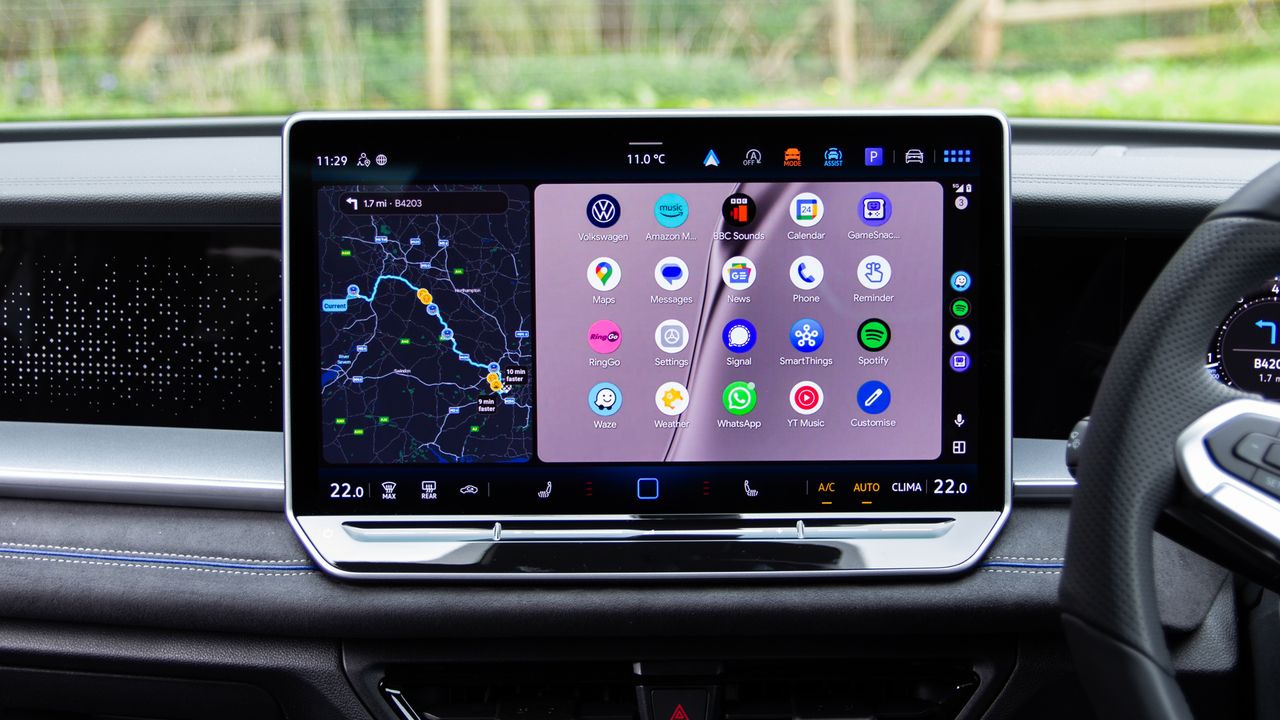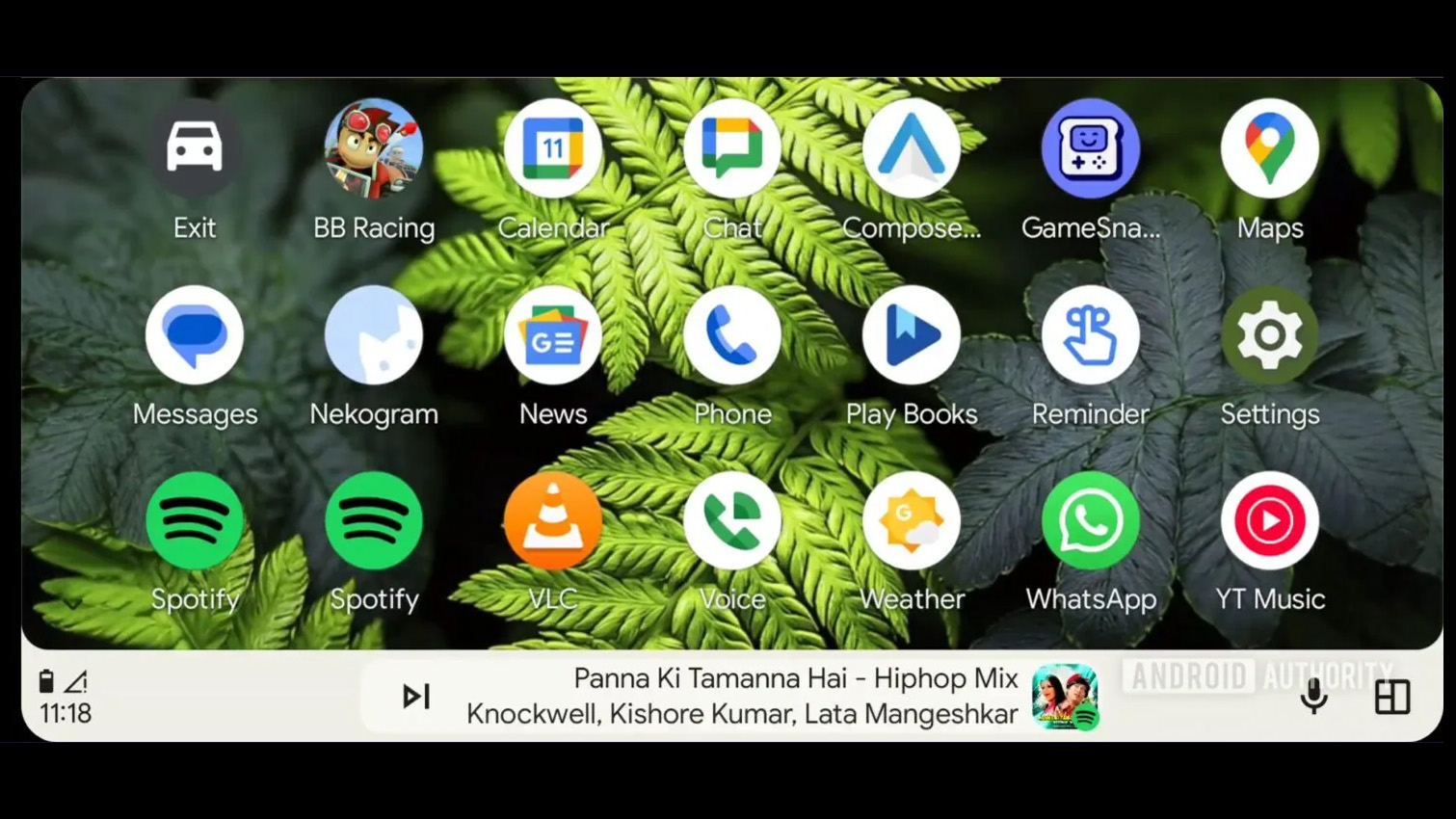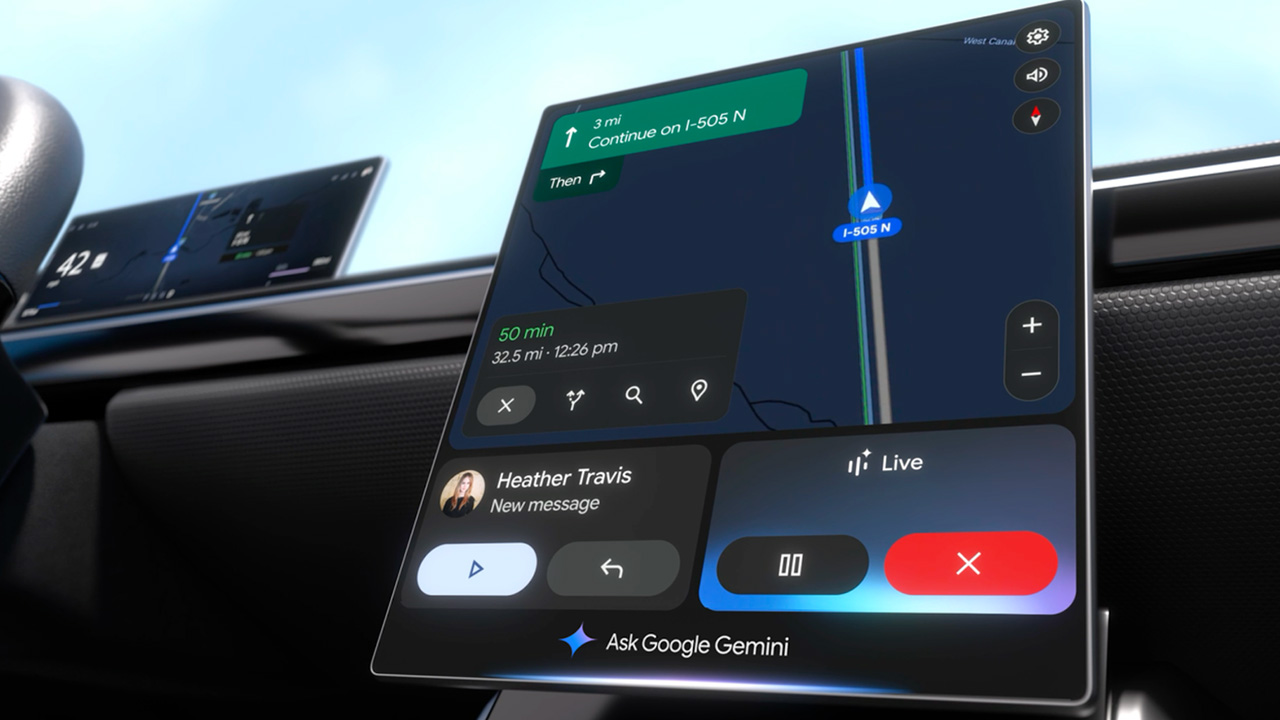
Hidden in the code of Android Auto is the ability to support more columns of apps.
That means that instead of five columns, you could have up to six or seven.
Google has been pushing through a number of changes to Android Auto recently, but all without making significant changes to how Android Auto actually works. There could be a change coming that makes a slightly bigger change, allowing access to more apps.
Currently, Android Auto will display up to five columns of apps when in the apps tray, depending on the size of the screen in your car. Remember that Android Auto only shows you compatible apps, but for those with a larger collection, accessing all those apps could be a challenge, leading to lots of scrolling.
Digging into the Android Auto app, Android Authority has discovered support for up to seven columns of apps, meaning you can fit more onto the screen. This isn't a feature that's available for drivers, but it was lurking in the depths of the code and able to be switched on.

The result was that a display that previously showed five columns of apps was able to show six or seven columns instead.
Just looking at the images shows that these are just being crammed in with less space around them, so while you could have more apps on the screen, your taps would have to be more precise to launch that app.
As this has come from the bowels of the Android Auto app, there's no guarantee that Google will enable this feature - it could just be something that Google was testing that hasn't been removed.
Just how many Android Auto apps do you need?
One of the things that in-car apps like Android Auto and Apple CarPlay have to balance is providing the services that people need while avoiding being a distraction when driving.
The number of Android Auto apps is slightly limited and that's no bad thing. When driving, the focus is really on navigation, communication and entertainment. Google also bundles in weather because – hey – everyone always needs weather information.
When parked, there's also access to browsers, games and video apps, but it's here that things get cluttered and distracting. While you can't use these sorts of apps while driving, they're still in the apps list, getting in the way of the apps you might actually need.
In reality, I suspect that most drivers have one preferred navigation app, a preferred music app and a preferred messaging format, rather than needing loads of apps all the time.

Android Auto offers a better way of opening apps too and it's called Google Assistant - soon to be replaced by Gemini. With compatibility with the voice button on the steering wheel (and supporting Hey Google) it's not hard to open an app and get it to do what you want while driving - all without having to tap anything on the screen.
It's likely that the move to more columns of apps is a reflection of growing in-car displays. While 8 inches was typical in recent years, we're now seeing 15 inch displays, more portrait displays and a general expansion of screens in cars.
Whether this feature will come to light, remains to be seen.







